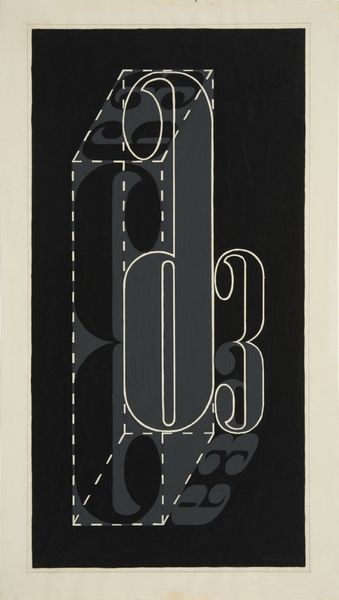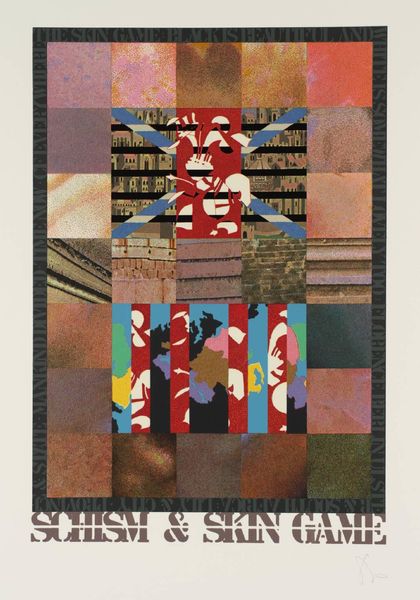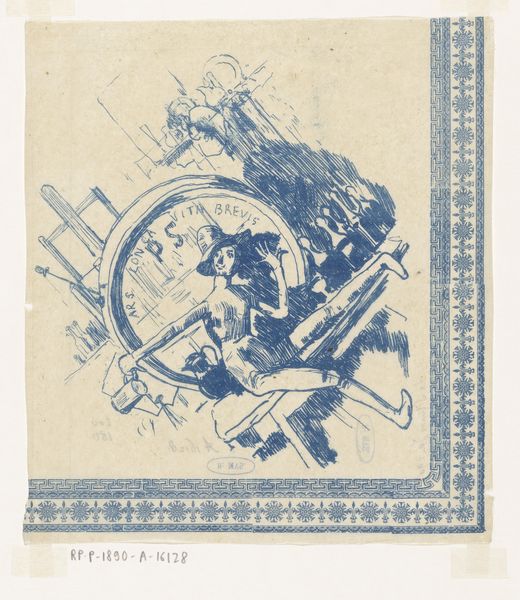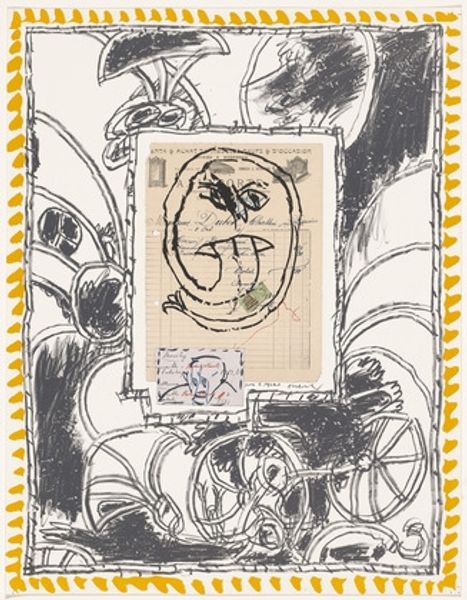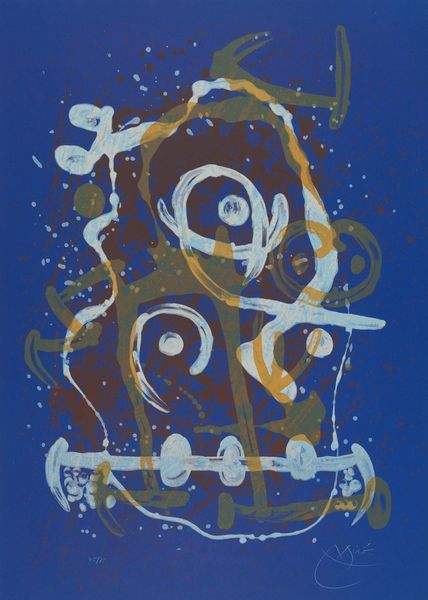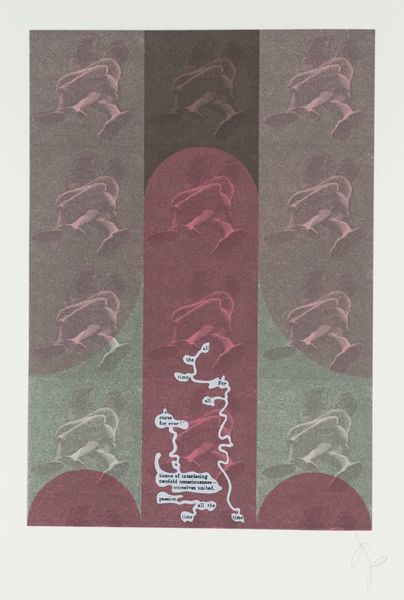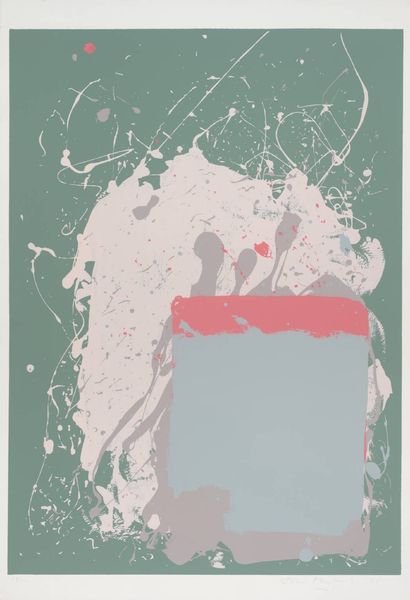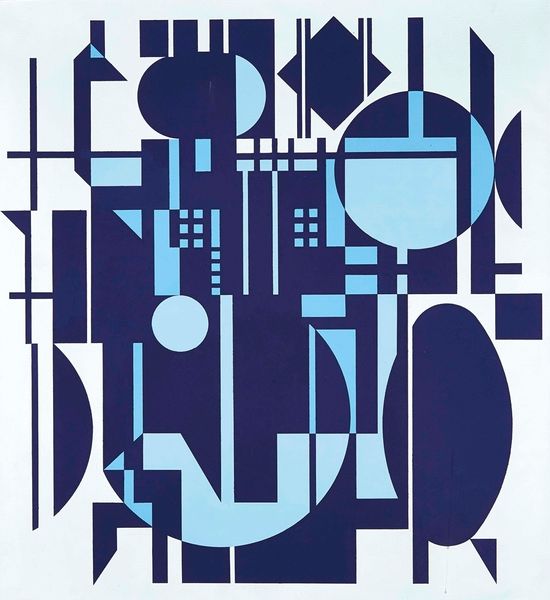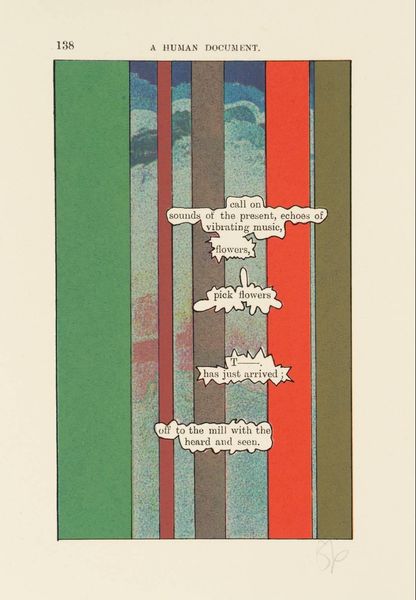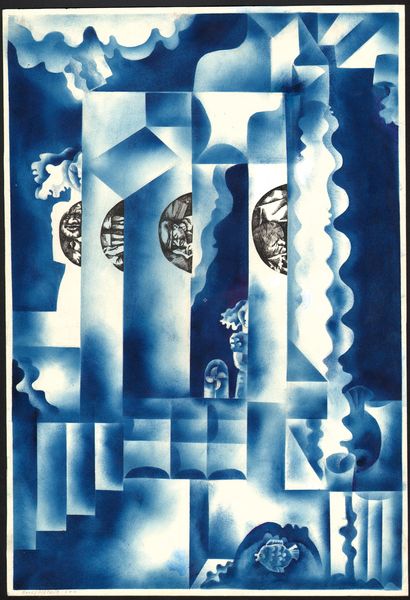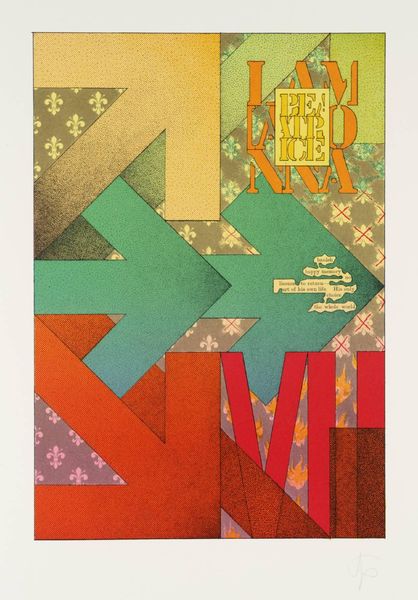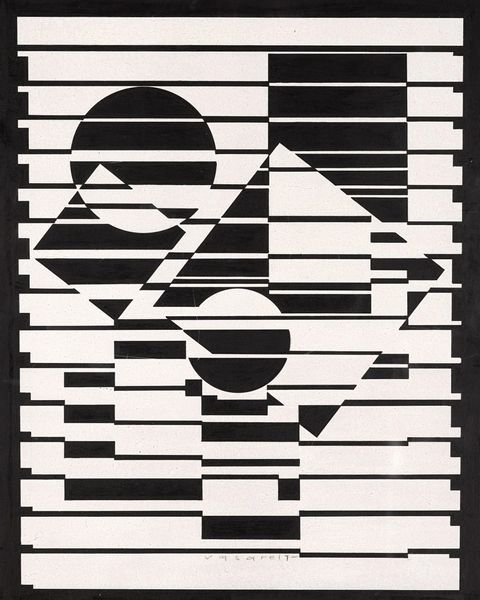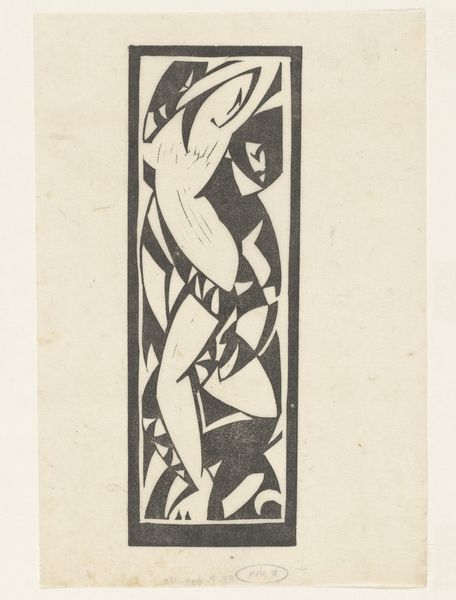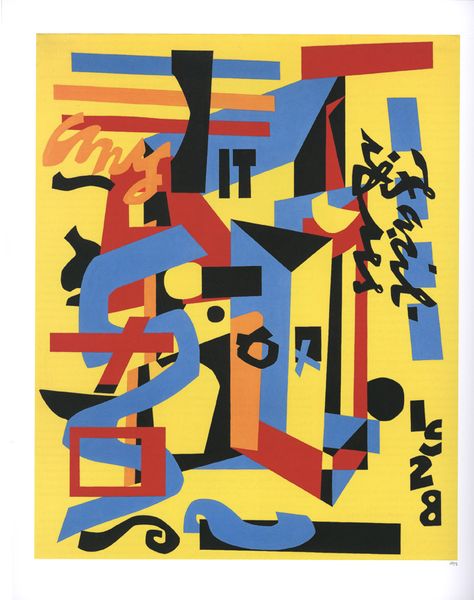
drawing, graphic-art, print
#
portrait
#
art-deco
#
drawing
#
graphic-art
# print
#
book
#
pop art
#
line
#
cartoon style
Dimensions: height 160 mm, width 68 mm
Copyright: Rijks Museum: Open Domain
Curator: I’d like to draw your attention to a bookplate, or "ex libris," created by Kornél Révész in 1932 for Dagmar Nováček. Immediately striking, don't you think? Editor: Absolutely. The figure blowing bubbles, paired with those angular letterforms, evokes a feeling of fragile optimism, that slightly melancholic beauty, a momentary pleasure held against a dark backdrop. Curator: Precisely. As a graphic print, we see a keen eye towards efficient design and reproduction; note how the colours are deployed in separated blocks—probably using linocut, given the clear outlines, right? It’s interesting to think of the labor involved in carving those fine lines for each color layer. Editor: Yes, it's very methodical, and if we think about how ex libris designs operate—stamped in multiple copies to signal book ownership—it connects directly to the democratizing potential of print. Were there many print workshops specializing in bookplates like this at the time? Curator: We see a flourishing of this genre during this interwar period, so Révész and others are likely engaged in a visual dialogue through similar commissions. But look more closely—isn't the tension palpable? This almost childlike playfulness contrasts starkly with the anxieties of the time, of pre-war Europe? Editor: True, those bubbles seem like such fleeting pleasures—a poignant comment, especially viewed now. It also makes me consider what Dagmar Nováček, the book's owner, thought about all of it. Was this darkness intentional? Did this express her aesthetic inclination? What's behind it? Curator: These commissions invite endless projections, don't they? The image teases the imagination in terms of content as much as material concerns. Editor: Right—ultimately it’s a beautifully made functional object, designed for a specific purpose. Looking again, I admire the care in production here: these hard graphic lines contrasting the lightness of the bubbles really stay in mind.
Comments
No comments
Be the first to comment and join the conversation on the ultimate creative platform.
